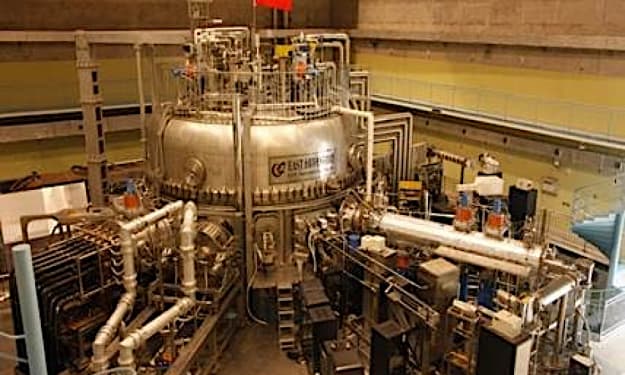Generative AI in Design
Above you, under you and around you, generative AI is already designing our brave new world

Generative AI is a powerful tool that has transformed the field of product design, but what is it? Simply, it is a type of artificial intelligence that can create new data or output that is similar to or based on a set of training data.
It uses a framework known as 'GAN':
A generative adversarial network (GAN) is a class of machine learning frameworks designed by Ian Goodfellow and his colleagues in June 2014. Two neural networks contest with each other in the form of a zero-sum game, where one agent's gain is another agent's loss. - Wikipedia
The core idea of a GAN is based on the "indirect" training through one neural network known as the discriminator and another neural network that can tell how "realistic" the input seems, which itself is also being updated dynamically. The neural networks are in competition.
A design system using such generative AI enables designers to generate new designs and ideas that would be difficult or impossible to conceive otherwise, by leveraging the power of machine learning algorithms.
Generative AI in product design can be used to generate designs for a wide range of products, including consumer electronics, automotive components, furniture, and many others.
The key advantage of generative AI is its ability to generate a large number of designs in a short amount of time, and to optimize them for specific criteria. This allows designers to quickly explore a wide range of design options and select the most promising ones for further development.
The leading systems
It's very many years since I sold a copy of the early Autodesk when I was in the PC business, and how things have changed! Today, one of the leading systems for generative AI in product design is Autodesk's Fusion 360. This cloud-based design software uses generative design to explore all possible design permutations, based on a set of user-defined constraints. The system then selects the best design options based on criteria such as weight, strength, and material usage. Fusion 360 also offers a range of simulation tools that can be used to test and refine the designs before they are put into production.
Another leading system for generative AI in product design is Siemens NX. This system uses AI to optimize product design for specific user-defined criteria, such as weight reduction or structural performance. It also offers simulation tools that can be used to test and validate the designs, and a range of 3D printing and manufacturing tools for prototyping and production.
Another system is Hexagon's MSC Apex. This is what their website says (no affiliation):
MSC Apex Generative Design provides a truly end to solution for designers making high-precision, industrial components. It takes you from screen to machine faster and with less human intervention than any other software.
Change is upon us. For the first time you can innovate, improve and validate parts and products in one simple end to end solution. Designers unite, join the MSC ApexGD revolution today.
Designers love MSC Apex Generative Design. Their eyes light up when they use it because it thinks like them, improving parts using subtractive, formed and assembled designs - only faster. Users have experienced 80% reductions in initial design and setup time by combining multiple steps, from a starting geometry through preparation to optimisation.
The challenges
One of the biggest challenges of generative AI in product design is the need for high-quality data. It relies on large amounts of data to train the machine learning algorithms that generate the designs. This data needs to be accurate and representative of the product design space, which can be a challenge for many companies to collate and present.
Additionally, generative AI systems can be difficult to integrate into existing design workflows, which can slow down the design process and add additional costs.
So in many ways, it's better to start from scratch, build a new factory with new processes aligned to generative AI workflows. From design or re-design straight through to 3-D metal printing of parts.
Think of Formula 1 with Aston Martin building a new operation at vast cost. During the season some components may have to be redesigned, installed and tested in a one week interval between grands prix.
Another challenge of generative AI in product design is the need for designers to have a deep understanding of the technology and its capabilities. While the systems are designed to be user-friendly, they can still require a significant amount of training and experience to use effectively. This can limit the adoption of generative AI in some companies and industries.
Despite these challenges the ability to generate a large number of designs quickly and optimize them for specific criteria can help companies stay competitive in a rapidly changing marketplace.
Aerospace
Generative AI has become an essential tool for NASA and aerospace companies.
Aerospace companies such as Boeing and Airbus are using generative AI to improve the design of their aircraft. Boeing, for example, has developed a software program called "OptiStruct" that uses generative design to optimize the weight and performance of aircraft components. The program uses a combination of machine learning algorithms and finite element analysis to generate and evaluate design options.
Components such as turbine blades, airfoils, and other components that are critical for the performance and safety of the aircraft can be designed and optimised. Generative AI is used to optimize these components for specific criteria such as weight, strength, and aerodynamic efficiency.
NASA has been a leader in the use of generative AI for aerospace design. The agency's Space Technology Mission Directorate (STMD) has developed a range of tools and software for generative design, including the Multi-disciplinary Design Optimization (MDO) program. MDO is a software package that uses machine learning algorithms to optimize the design of aerospace components, such as the wings of an aircraft. It can quickly evaluate thousands of design options to find the best combination of materials, shapes, and other parameters.
One example of a NASA component designed using generative AI is a rocket engine bracket that was developed in partnership with software company Frustum. The bracket designed generated a range of possible designs that would meet the requirements.
The final design that was selected by NASA was a complex, lattice-like structure that was much lighter and more efficient than previous designs. The bracket was 3D printed using a titanium alloy, and it was tested and certified for use in rocket engine applications.
NASA has used Autodesk software to produce new lighter designs for a lander.

NASA's Jet Propulsion Laboratory (JPL) has developed a tool called the "Exploration Architecture Synthesis System" (EASSy) which uses generative design to optimize mission architectures for space exploration. EASSy is used to generate and evaluate a wide range of possible mission scenarios, taking into account factors such as cost, launch vehicle capability, and mission duration. This is a kind of 'strategic' use, whereas components might be seen as 'tactical'.
How are these systems trained?
I mentioned the 'GAN' model at the start. Here's a bit more detail.
During training, the generator network is fed random noise and generates new data, such as images or text. The discriminator network then evaluates the generated data and tries to determine whether it is real or 'fake'. Using feed back over time, the generator becomes better at creating realistic data, while the discriminator becomes better at distinguishing between real and fake data. This process continues until the generator is able to produce data that is indistinguishable from real data.
There are other types of generative AI models as well, such as autoencoders and variational autoencoders. These models also use neural networks to generate new data, but the training process is slightly different. For example, an autoencoder is trained to reconstruct input data rather than generate entirely new data.
Regardless of the specific model used, the key to training a generative AI system is to provide it with large amounts of high-quality training data. And that is expensive.
But now, AI systems are also being used to create 'fake real' data for training. Synthetic data.
That's concerning.
This data is used to teach the system how to generate new data that is similar to the training data. In some cases, additional constraints or objectives may be added to the training process to optimize the output of the system for specific criteria, such as visual quality or coherence.
Autodesk's Training
Autodesk Fusion 360 uses a proprietary generative design technology called "Generative Design for Manufacturing" (GDM) to train its generative AI system. Autodesk uses a combination of machine learning techniques, including supervised and unsupervised learning.
The system is trained on a large dataset of CAD designs, simulations, and manufacturing data to learn patterns and relationships between design parameters and outcomes. The machine learning algorithms then use this knowledge to generate new designs that meet the specified criteria.
In addition to machine learning techniques, GDM also incorporates feedback from human designers to refine and optimize the generated designs.
It's comforting to know that humans are involved, but how much longer will it be before humans are of the loop entirely, when everything is in the cloud and these AI systems are communicating without our input or even knowledge? Not long.
It's already happened.
I'm going to sign off there and pop a can of beer (so thin, AI optimised) and relax on my AI designed furniture.

Ughh!
I hope they make a better job of aircraft components.
Final thought: The AI singularity might be approaching, but I, for one, do not plan to be around to witness it. This elusive concept describes the moment AI exceeds beyond human control and rapidly transforms society.
At least his seat looks normal.
And the ultimate in Generative Design, with billions of generations, success and failures of structure...

Could Generative AI take over after the AI Singularity and start redesigning our society?
***

About the Creator
James Marinero
I live on a boat and write as I sail slowly around the world. Follow me for a varied story diet: true stories, humor, tech, AI, travel, geopolitics and more. I also write techno thrillers, with six to my name. More of my stories on Medium






Comments
There are no comments for this story
Be the first to respond and start the conversation.